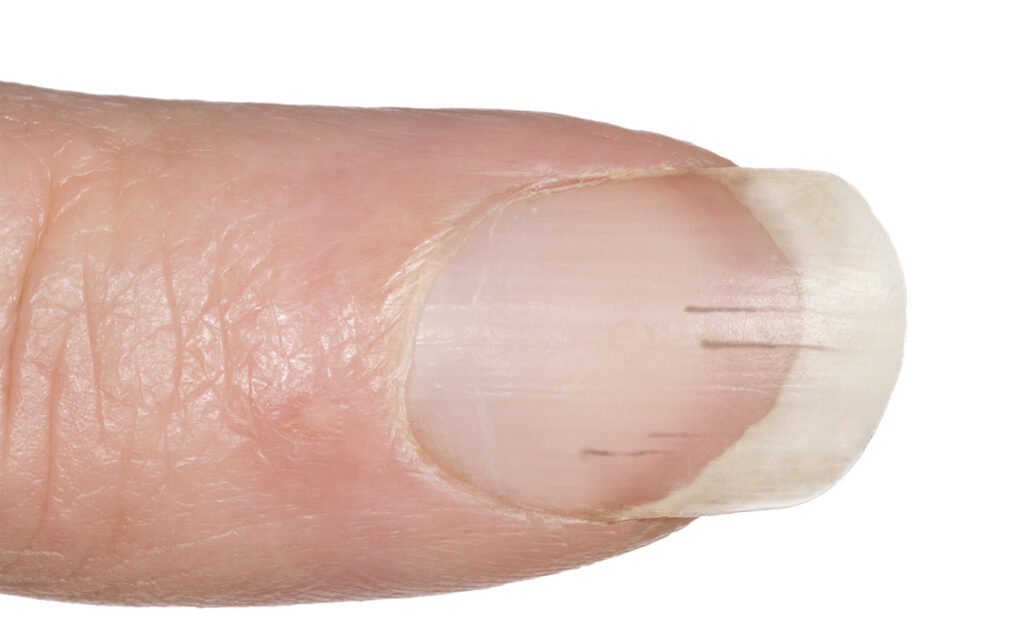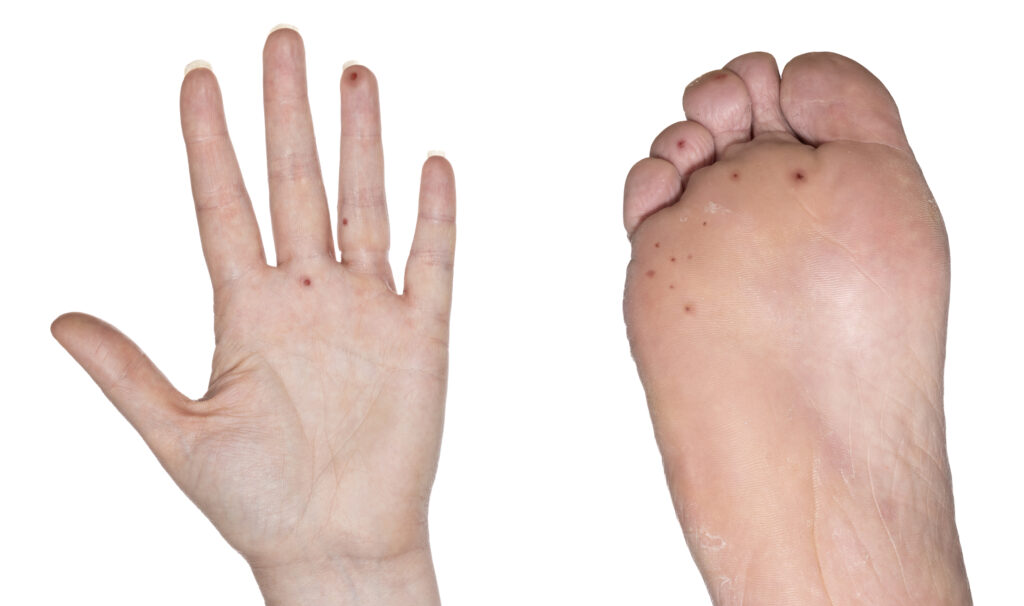
You have received treatment in your mouth today that may make you more at risk of developing infective endocarditis (IE) in the days and weeks after your treatment.
This leaflet will provide you with information about what IE is and why it is important for you to be aware of any signs or symptoms you develop.
It is an infection of the inner lining of the heart chambers that often involves the heart valves. It is usually caused by bacteria or fungi entering the bloodstream and attaching to damaged areas of the heart. It is a rare but serious condition.
Certain factors can increase the risk of developing IE including:
The symptoms of IE can develop slowly or suddenly, depending on the cause. Common signs include:

Nail bed haemorrhages

Osler's nodes on hand and foot

Janeway lesions on hand
If you have any of these symptoms, particularly if you have any of the risk factors for infective endocarditis, please seek medical attention immediately.
If you are concerned or experience symptoms of IE, contact your GP, cardiologist or go to your local Emergency Department (ED) for further assessment.
www.nhs.uk/conditions/endocarditis/ https://www.sdcep.org.uk/media/qvpj2kfb/sdcep-antibiotic-prophylaxis-implementation-advice.pdf
You can contact us using the Relay UK app. Textphone users will need to dial 18001 ahead of the number to be contacted.
Bradford Teaching Hospitals NHS Foundation Trust is a smoke-free organisation. You are not permitted to smoke or in use e-cigarettes in any of the hospital buildings or grounds.